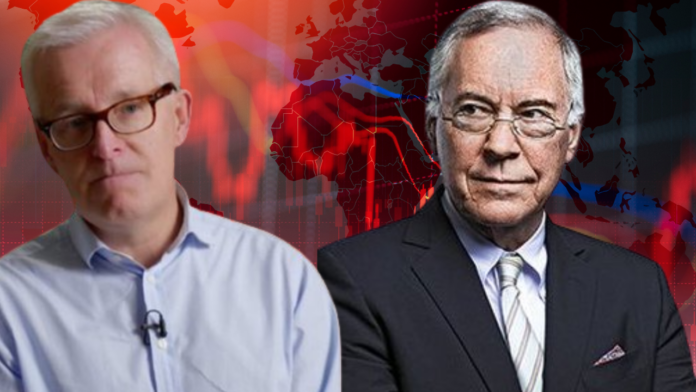Economic forecasts have never been short of contradictions, and the latest debate is no exception. Steve Hanke, a veteran economist from Johns Hopkins University, has been ringing alarm bells over a coming recession in the United States, with his reasoning hinging on a rare contraction in the M2 money supply. On the other side, Michael Howell, a global liquidity expert, argues that improving financial conditions worldwide could keep economic momentum going. Their contrasting perspectives expose a deeper question: does historical data on money supply still hold up in today’s globalised economy?
Hanke’s argument is straightforward. He points to the M2 money supply—a broad measure that includes cash, checking deposits, and easily convertible near-money—as a proven predictor of recessions. Since 1913, every time M2 has contracted significantly, a recession or depression has followed. The latest contraction, a 3% drop from its peak of $21.7 trillion in 2022 to around $21 trillion in mid-2024, is the fifth such instance in over a century. Given the typical one-to-two-year lag in monetary policy effects, Hanke believes the US is on a path toward an economic slump by late 2024 or early 2025. He’s not wavering on this forecast.
Even though M2 has started expanding again—up 2.47% year-over-year by September 2024—Hanke insists that it’s still not enough. He believes that to sustain the economy at the Federal Reserve’s target inflation rate, the money supply should be growing at around 6% annually. Anything below that, in his view, means the economy is still running low on fuel. He also warns that protectionist trade policies, particularly tariffs floated by a potential Trump administration, could make matters worse.
Then there’s Howell, who takes a different view. His focus isn’t just on US money supply but on the broader picture of global liquidity. With years of experience in tracking international capital flows, he argues that global liquidity conditions are improving and could counteract the negative effects of past monetary tightening.
China’s central bank, the People’s Bank of China (PBOC), has been actively ensuring that its financial system remains well-oiled. Measures like reserve ratio cuts, open market operations, and medium-term lending facilities have kept liquidity stable. Over in Europe, banks had been hit with higher financing costs due to tightening policies, but with central banks now shifting towards easing, the liquidity squeeze might be reversing.
The Federal Reserve’s 0.5% rate cut in September 2024 is another key factor Howell points to. After four years of higher interest rates, this move signals a turning point that could help markets regain some footing. A shift in global liquidity patterns is evident, with more capital flowing into international markets rather than being constrained by traditional banking channels.
The tension between these two perspectives boils down to timing and scale. Hanke’s recession thesis is based on domestic money supply trends and their historical reliability in predicting downturns. Howell, on the other hand, sees global liquidity as a more powerful force, one that might soften or even override the M2 contraction’s effects. If the Federal Reserve’s shift in policy and global liquidity injections gain momentum, the economic downturn that Hanke predicts may not materialise as severely—or at all.
This leaves policymakers, investors, and businesses in a bind. If Hanke is right, defensive strategies are in order, with a focus on recession-resistant sectors and safe-haven assets. If Howell’s thesis holds, then market participants might want to look for opportunities in growth-oriented investments that benefit from improving liquidity conditions.
The Federal Reserve’s next moves will be pivotal. While past M2 contractions have led to recessions, today’s financial system is far more interconnected than in previous cycles. Global capital flows, the rise of non-bank financial institutions, and the shifting role of central banks have added layers of complexity that weren’t as prominent in previous economic downturns.
What happens next will depend on how these forces play out. If the Federal Reserve’s easing aligns with improving liquidity conditions worldwide, the economy may escape Hanke’s dire prediction. If, however, the lagging effects of the M2 contraction prove as reliable as history suggests, then the US might be heading into choppier waters. Either way, this debate is far from settled, and the next few months will provide the ultimate test for both perspectives.


